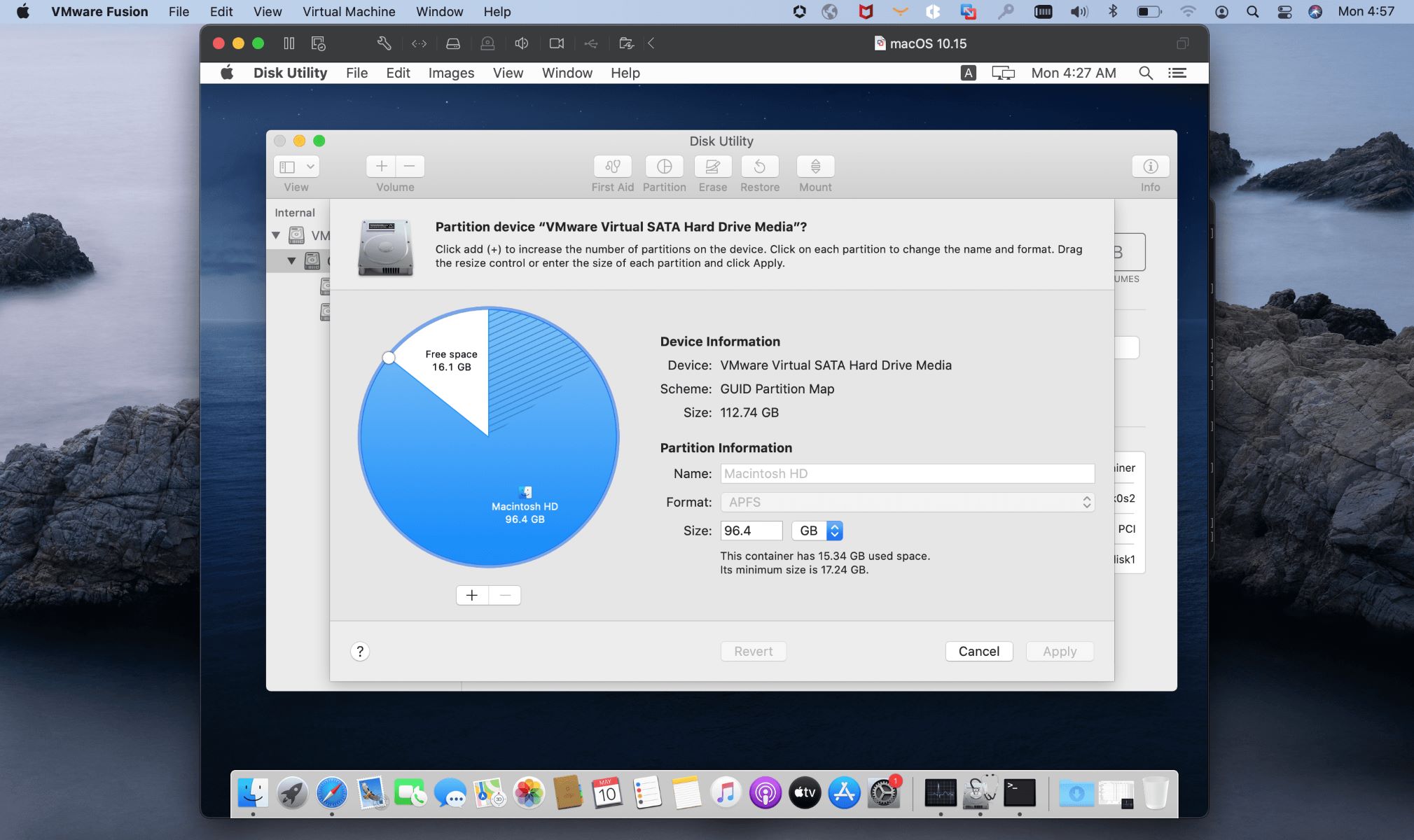Introduction
In the rapidly evolving world of virtualization, virtual machines (VMs) have become an integral part of modern computing. As businesses and individuals increasingly adopt virtualization technology, one of the critical factors to consider is the space utilization of virtual machines. Understanding how much space a virtual machine takes is crucial for efficient resource management, cost optimization, and scalability planning.
Virtual machines are essentially software emulation of computer systems, allowing multiple operating systems to run concurrently on a single physical server. Each virtual machine includes its own operating system, applications, and configuration settings, which collectively contribute to its overall size.
The size of a virtual machine is influenced by several factors, including the base image size, operating system size, additional software and packages, virtual machine snapshots and backups, and various storage optimization techniques.
This article explores the factors that affect the size of a virtual machine and provides insights into calculating the disk space required for creating and managing virtual machines. We will also discuss techniques for optimizing storage utilization and conclude with key takeaways for efficient virtual machine sizing and management.
Factors that Affect Virtual Machine Size
Several factors contribute to the overall size of a virtual machine. Understanding these factors is essential for effectively managing VMs and optimizing resource allocation. Here are the key factors that influence the size of a virtual machine:
- Base Image Size: The base image is the initial template from which a virtual machine is created. It includes the underlying operating system and a minimal set of applications and configurations. The size of the base image directly impacts the size of the resulting virtual machine. Therefore, selecting a compact base image is crucial for reducing VM size.
- Operating System Size: The operating system installed on a virtual machine occupies a significant portion of its size. Different operating systems have varying disk space requirements. For example, lightweight Linux distributions tend to have smaller footprints compared to Windows-based systems. Choosing a streamlined operating system can help minimize the size of the virtual machine.
- Additional Software and Packages: As virtual machines are customized for specific applications or workloads, additional software and packages are often installed. These can include development tools, databases, web servers, and other dependencies. The size of these installed packages directly impacts the overall size of the virtual machine.
- Virtual Machine Snapshots and Backups: Virtual machine snapshots and backups are essential for data protection and disaster recovery. However, these snapshots and backups contribute to the storage requirements of virtual machines. Each snapshot or backup adds to the size of the virtual machine, so it’s important to manage and periodically remove unnecessary snapshots to optimize disk space.
Other factors that can influence virtual machine size include resource allocation settings, such as CPU and memory configurations, disk provisioning type (thin or thick provisioning), and virtual hardware devices attached to the VM (graphics cards, sound cards, etc.). It is important to consider these factors and make informed decisions to ensure optimal utilization of resources.
Virtual Machine Disk Size Calculation
Calculating the disk size required for a virtual machine involves considering various factors that contribute to its overall size. By understanding these factors, you can estimate the necessary disk space for creating and managing virtual machines efficiently. Here is a step-by-step approach to calculate the virtual machine disk size:
- Base Image Size: Determine the size of the base image that will serve as the starting point for the virtual machine. This can be obtained from the vendor or the source from which you are obtaining the base image.
- Operating System Size: Consider the disk space requirements of the operating system you plan to install on the virtual machine. Typically, this information is available from the operating system vendor or documentation.
- Additional Software and Packages: Identify the software and packages you need to install on the virtual machine based on your application requirements. Determine the disk space required for each of these components.
- Virtual Machine Snapshots and Backups: If you intend to use snapshots or backups for the virtual machine, estimate the amount of disk space that will be consumed by these operations. It is recommended to allocate additional space for snapshots and backups to account for growth and retention policies.
- Virtual Machine Settings: Take into consideration the resource allocation settings, such as CPU and memory configurations, which can impact the disk size indirectly. Provision additional disk space if the virtual machine requires higher CPU or memory resources.
Once you have gathered the disk size estimates for each component, add them together to obtain the total disk size required for the virtual machine. It is advisable to account for future growth and allocate additional space accordingly to avoid running out of disk space.
Remember that the disk size calculations are estimates, and the actual disk usage may vary based on factors such as application usage, data storage, and system updates. Regular monitoring and optimization of VM disk usage are essential to ensure efficient resource utilization.
Base Image Size
The base image serves as the foundation for creating virtual machines. It contains the underlying operating system and a minimal set of applications and configurations. The size of the base image directly influences the overall size of the resulting virtual machine. Therefore, selecting an appropriate base image is crucial for optimizing disk space and resource allocation.
When choosing a base image, it’s essential to consider the intended use case and the specific requirements of the virtual machine. Ideally, the base image should be lightweight, compact, and tailored to the desired operating system. This helps minimize the storage footprint and reduces system resource overhead.
Several options are available when it comes to selecting a base image:
- Vendor-Provided Images: Many vendors, such as VMware, Microsoft, and Amazon Web Services (AWS), offer pre-configured base images that encompass popular operating systems and configurations. These vendor-provided images are often optimized for performance and efficiency.
- Community-Supported Images: Open-source communities and user communities often create and share base images tailored to specific applications or use cases. These community-supported images can be a valuable resource, providing lightweight and specialized options for building virtual machines.
- Customized Images: Organizations can create their own base images by customizing existing images or building them from scratch. This allows for greater control and customization, ensuring that the image aligns precisely with the requirements of the virtual machine.
When creating or selecting a base image, it is essential to consider factors such as security, stability, and patching. Regular updates and patches should be applied to the base image to address any vulnerabilities and ensure a secure and stable foundation for the virtual machine.
Additionally, it is worth mentioning that technologies like containerization and virtual machine templates can significantly reduce the base image size. These techniques leverage shared components and layering, resulting in more efficient disk utilization for virtual machines.
By carefully selecting and managing the base image, you can optimize the size and efficiency of your virtual machines. Regularly assess your base image choices and update them as needed to keep up with evolving technology and security standards.
Operating System Size
The operating system (OS) installed on a virtual machine plays a significant role in determining its overall size. Different operating systems have varying disk space requirements, and understanding these requirements is crucial for optimizing virtual machine storage.
When selecting an operating system for your virtual machine, consider the specific needs of your applications and workloads. Some operating systems, like lightweight Linux distributions, have smaller footprints and require less disk space compared to Windows-based systems. Choosing a streamlined operating system can help minimize the size of the virtual machine and optimize resource allocation.
The disk space occupied by the operating system includes the core system files, system configuration files, and necessary software libraries. The size of the OS will depend on the version, edition, and any additional components or features that are bundled with it.
It’s important to keep in mind that the base installation size of an operating system may not account for future updates, patches, and installed packages. As the virtual machine is used and software is installed or updated, the size of the operating system may increase. Regular maintenance and management of the virtual machine, including removing unnecessary files, updates, and temporary files, can help optimize disk space.
Virtual machine templates, provided by vendors or custom-built, can also contribute to reducing the size of the operating system. These templates typically include a stripped-down version of the OS, removing unnecessary components and services, resulting in a smaller footprint.
Furthermore, it is important to periodically reassess the need for certain operating system components or features. Uninstalling unused software or disabling unnecessary services can free up disk space and improve overall performance.
Lastly, remember that operating system updates and patches may require additional disk space. As part of your virtual machine management strategy, allocate enough space to accommodate these updates and ensure the system remains secure and up to date.
In summary, consider the disk space requirements of the operating system, choose a lightweight and streamlined version, and regularly maintain and update the virtual machine to optimize storage utilization while ensuring optimal performance and security.
Additional Software and Packages
In addition to the operating system, virtual machines often require additional software and packages to fulfill specific application requirements or workload needs. The size of these installed components directly contributes to the overall size of the virtual machine.
When determining the additional software and packages to install, it is important to consider the specific applications and functionalities that the virtual machine will be used for. This may include development tools, databases, web servers, content management systems, and various dependencies.
Each software package or application carries its own disk space requirements, which can vary based on the version, architecture, and additional features or plugins installed. It is crucial to research and factor in the estimated disk space needed for these additional software and packages during the virtual machine planning and provisioning phase.
To optimize disk space utilization, consider the following strategies when installing additional software and packages:
- Select Minimal Install Option: Many applications and software packages offer a minimal or custom installation option, which allows you to choose only the necessary components needed for your specific requirements. Selecting the minimal install option can help reduce unnecessary disk space usage.
- Remove Unused Components: Regularly review the installed software and packages and remove any components that are no longer needed. This can help free up disk space and streamline the virtual machine.
- Utilize Package Managers: Package managers, such as apt, yum, or chocolatey, can assist in managing software installations, updates, and dependencies. These tools ensure that software packages are installed efficiently and minimize disk space usage by resolving and managing dependencies automatically.
Additionally, keep in mind that some software and packages may have frequent updates and patches that can increase the disk space usage over time. Regularly updating and maintaining the virtual machine will help ensure it remains up to date and secure, while also optimizing disk space.
By carefully selecting and managing the additional software and packages installed on a virtual machine, you can effectively optimize the size of the VM, minimize resource utilization, and improve performance.
Virtual Machine Snapshots and Backups
Virtual machine snapshots and backups are essential for data protection, disaster recovery, and maintaining system integrity. However, it’s important to understand that these snapshots and backups contribute to the size of the virtual machine and should be carefully managed to optimize disk space utilization.
When a snapshot is taken, it captures the state of the virtual machine at a specific point in time, including the system files, data, and virtual disk contents. Each snapshot adds to the storage requirements of the virtual machine, as it maintains a copy of the original disk data and any subsequent changes made to the system.
While snapshots provide the ability to roll back to a previous state, they can rapidly consume disk space if not managed properly. To avoid excessive disk usage, it is essential to regularly review and manage snapshots. Consider the following best practices:
- Snapshot Retention Policies: Establish snapshot retention policies that define how many snapshots are retained and for how long. Remove unnecessary snapshots, especially those that are no longer needed for rollback purposes.
- Consolidate Snapshots: When multiple snapshots exist, consider consolidating them into a single snapshot or merging them into the virtual machine’s base disk. This reduces the space consumed by snapshots and streamlines the management process.
- Regularly Monitor Disk Usage: Keep a close eye on the disk usage of virtual machine snapshots. Implement monitoring tools that alert you of excessive disk usage, allowing you to take timely action to free up space.
Similarly, virtual machine backups also contribute to the overall disk space usage. Backing up a virtual machine involves creating a separate copy of the VM’s disk contents, which can significantly increase the storage requirements.
To optimize disk space usage for backups, consider the following strategies:
- Compression and Deduplication: Utilize compression and deduplication techniques when performing backups. These methods can reduce the storage footprint and minimize the amount of space required for backups.
- Incremental or Differential Backups: Implement backup methods that perform incremental or differential backups, which only store changed or new data since the last backup. This approach reduces the disk space needed for backups over time.
- Offsite Storage and Rotation: Store backups offsite or in a separate storage solution. Implement rotation schedules to ensure that older backups are periodically removed or overwritten, optimizing disk space utilization.
By implementing sound snapshot and backup management practices, you can ensure both data protection and efficient disk space utilization. Regular monitoring, proper retention policies, and leveraging compression and deduplication techniques are key to maintaining a balance between backup needs and limited disk space.
Virtual Machine Storage Optimization Techniques
Optimizing virtual machine storage is essential for efficient resource management, cost optimization, and improved performance. By implementing various storage optimization techniques, you can minimize disk space usage while maximizing the utilization of virtual machine storage. Here are some effective techniques to consider:
- Thin Provisioning: Utilize thin provisioning to allocate storage on an as-needed basis. Unlike thick provisioning, which reserves the full allocated space immediately, thin provisioning allocates storage dynamically as data is written. This ensures efficient utilization of disk space by eliminating unused allocated space.
- Data Deduplication: Implement data deduplication techniques to identify and store only unique data blocks. By eliminating duplicate data blocks, you can significantly reduce storage requirements, especially when running multiple similar virtual machines or hosting similar datasets.
- Storage Compression: Compressing storage can help further reduce the size of virtual machine files. Data compression algorithms reduce the size of stored data by eliminating redundancies and compressing it using various techniques. However, it’s important to carefully balance compression levels to avoid significant performance degradation.
- Storage Tiering: Employ storage tiering to optimize storage utilization and performance. By segmenting storage into different tiers based on performance characteristics, you can assign more frequently accessed or performance-critical data to faster storage media, while using lower-cost storage for less critical data.
- Utilize Storage Snapshots: Leverage storage snapshots provided by the storage infrastructure to create point-in-time copies of virtual machine disks. These snapshots can serve as a backup mechanism and can be used for data recovery, eliminating the need for separate virtual machine snapshots that consume additional disk space.
- Efficient Disk Cleanup: Regularly perform disk cleanup tasks within virtual machines to remove temporary files, system logs, and other unnecessary data. This helps free up valuable disk space and improves overall virtual machine performance.
- Monitoring and Capacity Planning: Implement robust monitoring and capacity planning practices to accurately assess storage usage, anticipate future requirements, and identify areas where optimization can be implemented. By closely monitoring storage utilization, you can proactively optimize storage allocation and ensure that adequate resources are allocated when needed.
It’s important to note that while these techniques can significantly optimize storage utilization, careful planning, monitoring, and testing should be done to ensure that performance is not adversely affected. Balancing storage efficiency with performance requirements will help create a well-optimized virtual machine environment.
Conclusion
Understanding the factors that affect virtual machine size is crucial for efficient resource management, cost optimization, and scalability planning. By considering base image size, operating system size, additional software and packages, virtual machine snapshots and backups, and implementing storage optimization techniques, you can minimize disk space usage while maximizing storage utilization.
Selecting an appropriate base image and streamlined operating system helps reduce the overall size of the virtual machine. Carefully managing the installation of additional software and packages ensures that only essential components are installed, minimizing disk space requirements.
Regularly monitoring and managing virtual machine snapshots and backups is essential to optimize disk space utilization. Establishing retention policies, consolidating snapshots, and implementing backup compression and deduplication are effective strategies for managing storage consumption.
To further optimize virtual machine storage, techniques like thin provisioning, data deduplication, storage compression, and storage tiering can be employed. These techniques allow for efficient allocation and utilization of storage resources based on performance requirements and eliminate redundancies.
It is important to regularly monitor and evaluate storage usage, as well as perform maintenance tasks such as disk cleanup to free up valuable disk space and ensure optimal performance.
By implementing these storage optimization techniques and considering the various factors that contribute to virtual machine size, you can create an efficient and cost-effective virtual machine environment. Striking the right balance between resource allocation and storage utilization ensures optimal performance, scalability, and resource utilization in your virtualized infrastructure.

























